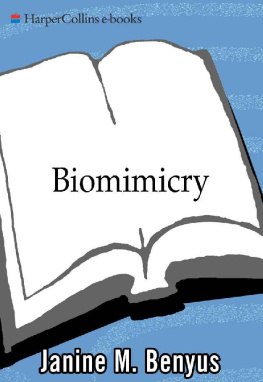PRAISE FOR THE SHARKS PAINTBRUSH
The Sharks Paintbrush reveals how nature is inspiring design to be more efficient, effective, resilient, and beautiful. In Natures 3.8 billion years of design experience, the roughly 99% of designs that didnt work got recalled by the Manufacturer. The 1% that survived can teach profound lessons about how things should be made, how they work, and how they fit. Jay Harmans immersion in and curiosity about the natural world have made him one of the best biomimetic designers. The Sharks Paintbrush is a masterly field guide for all designers and entrepreneurs who aspire to help the world of the made work like, and live harmoniously with, the world of the born.
Amory B. Lovins, Chairman and Chief Scientist, Rocky Mountain Institute
At this point in our global ecological crisis, the survival of humanity will require a fundamental shift in our attitude toward nature: from finding out how we can dominate and manipulate nature to how we can learn from her. In this brilliant and hopeful book, Jay Harman shows us how far the new field of Biomimicry has already progressed toward this goal. The Sharks Paintbrush makes for fascinating and joyful reading much needed in these dark times.
Fritjof Capra, author of The Science of Leonardo and The Tao of Physics
It blows my mind how the same patterns repeat themselves in flowers, growth in animals, and in shell spirals. When engineers mimic designs from nature, more efficient designs for windmills and fuel efficient vehicles are the result. Many of the breakthroughs are counter intuitive. Jay Harman has told the promise of Biomimicry in a compelling way. The Sharks Paintbrush is essential reading for people interested in design and engineering.
Temple Grandin, author of Thinking in Pictures
A useful update on recent developments in biomimicry and an intriguing case for innovative green technology that goes beyond sustainability.
Kirkus Review
The worlds most elegant engineer is without a doubt Mother Nature. Shes efficient, creative, and has time on her hands to put her innovations to the test, and Harman thinks we can learn a lot from watching her work. His company, PAX Scientific Inc., focuses on sustainable design solutions based on mimicking biological adaptations. Sounds far out, but the practice has been around for a while. Archimedes screw, a type of water pump that is still used today, is an early example of taking a concept from naturein this case the spiraland putting it to practical use. The eponymous paintbrush is equally fascinating. German scientists developed a special paint that, when applied to the hull of a ship in such a way as to mimic the water-repellent design of sharkskin, reduces drag by 5%. This can result in savings of 2000 tons of fuel per ship, per year. Looking elsewhere, scientists are learning about anticoagulants from leeches, acoustics from dolphins, antibiotics from Komodo dragons, shock absorbers from woodpeckers, and computer networks from slime molds. Harman points out that many of these developments would not only save money, but also prove an enormous boon to the survival of Mother Nature. His vision of a biomimetic new global economy is timely, crucial, and thrillingly eye-opening.
Publishers Weekly


Copyright 2013 by Jay Harman. All rights reserved.
No part of this book may be used or reproduced in any manner
whatsoever without written permission except in the case
of brief quotations embodied in critical articles and reviews.
White Cloud Press titles may be purchased for educational, business, or
sales promotional use. For information, please write:
Special Market Department
White Cloud Press
PO Box 3400, Ashland, OR 97520
Website: www.whitecloudpress.com
Jacket design by C Book Services
Jacket illustration Gary Bell/
OceanwideImages.com
Library of Congress Cataloging-in-Publication
Harman, Jay.
The sharks paintbrush : biomimicry and how
nature is inspiring innovation / Jay Harman.
p. cm.
1. Biomimicry. I. Title.
T173.8.H373 2013
600 dc23
2012015185
ISBN 978-1-935952-85-5
MANUFACTURED IN THE UNITED STATES
1 3 5 7 9 10 8 6 4 2
First Edition
To the shareholders and staff of PAX, who took the risk of supporting a new paradigm and whose generosity, trust, patience, and hard work brought it to life; and especially to Marion Webera true angel.
Contents

THE SHARKS
PAINTBRUSH

Why does the bumblebee have better aerodynamics than a 747?
How can a seashell keep a microchip from overheating?
How can the colors of a butterflys wing reduce the worlds lighting energy bill by 80 percent?
How can fleas knees and bees shoulders help scientists formulate a near-perfect rubber?
How will the answers to these and similar questions forever change our lives?
M ost young ladies sunning by the pool or beach probably arent thinking about a hippopotamus, let alone its perspiration. However, it turns out that hippo sweat provides a highly effective, four-in-one sunblock. We humans perspire by allowing salt water to leave our pores, using the physics of evaporation to cool the skin. Hipposlong-lost cousins of whales and dolphinssolve more than just a cooling problem by secreting a blend of chemicals that takes care of many challenges simultaneously. Besides being an excellent, nontoxic sunscreen (though perhaps a little aromatic in its natural form), hippo sweat is also antiseptic, insect repelling, and antifungal.
Researchers at Kyoto Pharmaceutical University and the University of Trieste, as well as Dr. Christopher Viney and his materials engineering team at the University of California, Merced, have studied the rust-colored combination of mucus and chemicals secreted by hippos. They found two pigments that absorb light across the ultraviolet-visible range, with crystalline structures that ensure the material spreads over the entire skin without the need for being rubbed on by hand (a challenge for a hippo). The pigments turn white skin a shade darker, while simultaneously slowing the rate of bacteria growth.
With one million Americans developing skin cancers each year, the market for sunscreen is substantial$640 million a year and growing. Yet of the more than eighteen hundred products containing sunscreen on the market today, three out of four have been shown not to live up to their claims. In addition, most chemicals applied to the skin can be absorbed straight into the bloodstream, so some scientists are concerned that certain sunscreens may prevent sunburn but introduce toxins that can still cause cancer. In fact, the FDA recently responded to concerns about product efficacy by tightening the rules for sunscreen labels.
Of course, few bathing beauties would find delight in smelling like a hippos armpit, so theres the exciting opportunity to synthesize the sweats beneficial properties, having it smell more like, say, coconuts. Longer term, scientists anticipate applying the hippos chemistry to exterior paints, clothing, and other UV-sensitive products.
Whether finding inspiration on hippos to reduce skin cancer or developing better road systems by studying the tracks made by slime molds seeking food, biomimicry, or bio-inspiration as some call it, very simply means applying lessons learned from nature to solve human problems. Examples of biomimicry include everything from energy-producing solar cells that mimic tree leaves to lifesaving pharmaceutical breakthroughs based on the biology of lizards to antibacterial paints that emulate sharkskin to highly profitable businesses that improve their organizational structures based on redwood groves. Even the Velcro you undoubtedly have somewhere in your closet is a prime example of biomimicry in action.
Next page


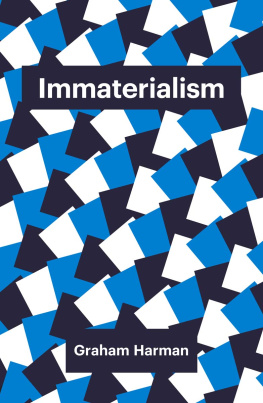
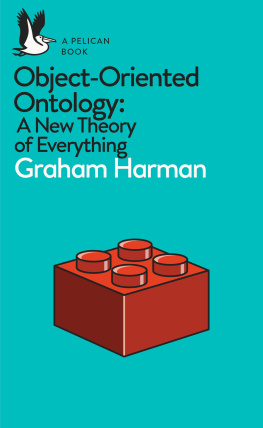


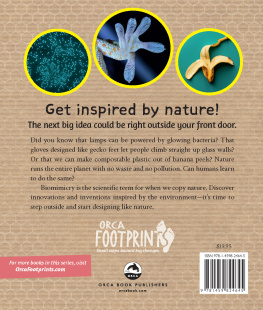
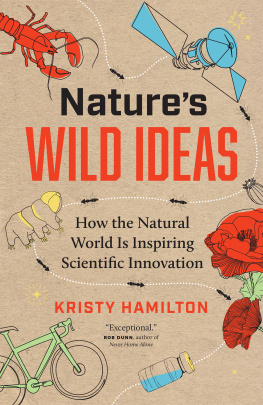
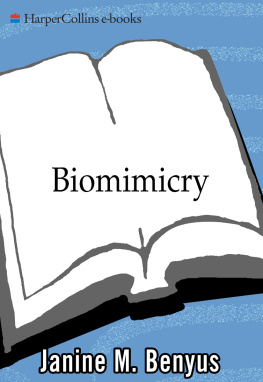
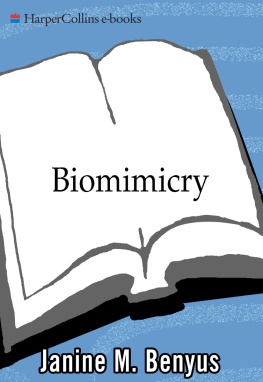
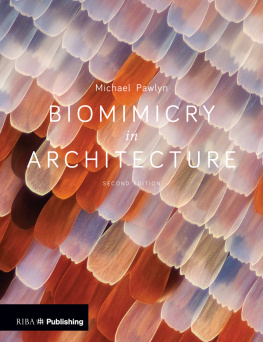
![Katherine Collins [Katherine Collins] - The Nature of Investing: Resilient Investment Strategies through Biomimicry](/uploads/posts/book/124125/thumbs/katherine-collins-katherine-collins-the-nature.jpg)
